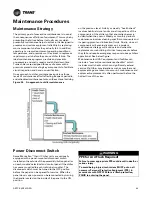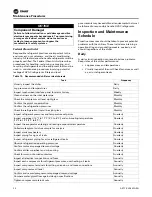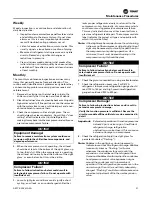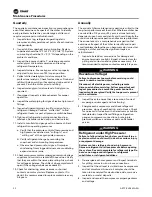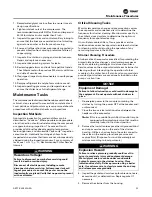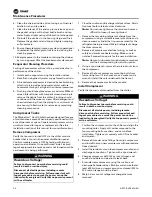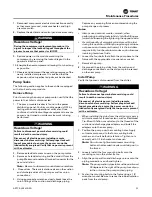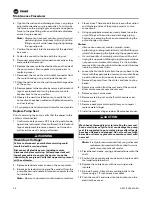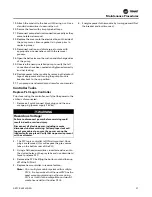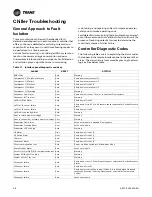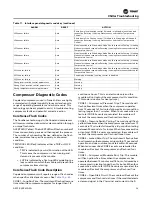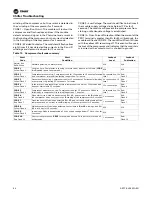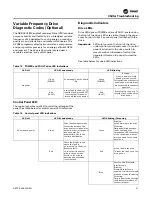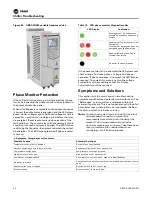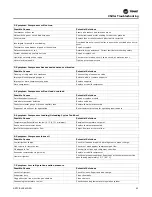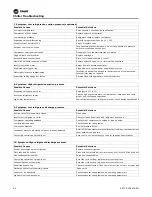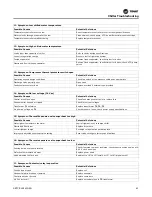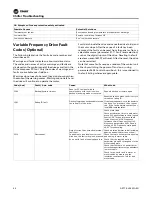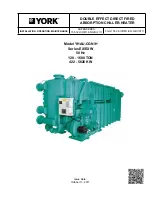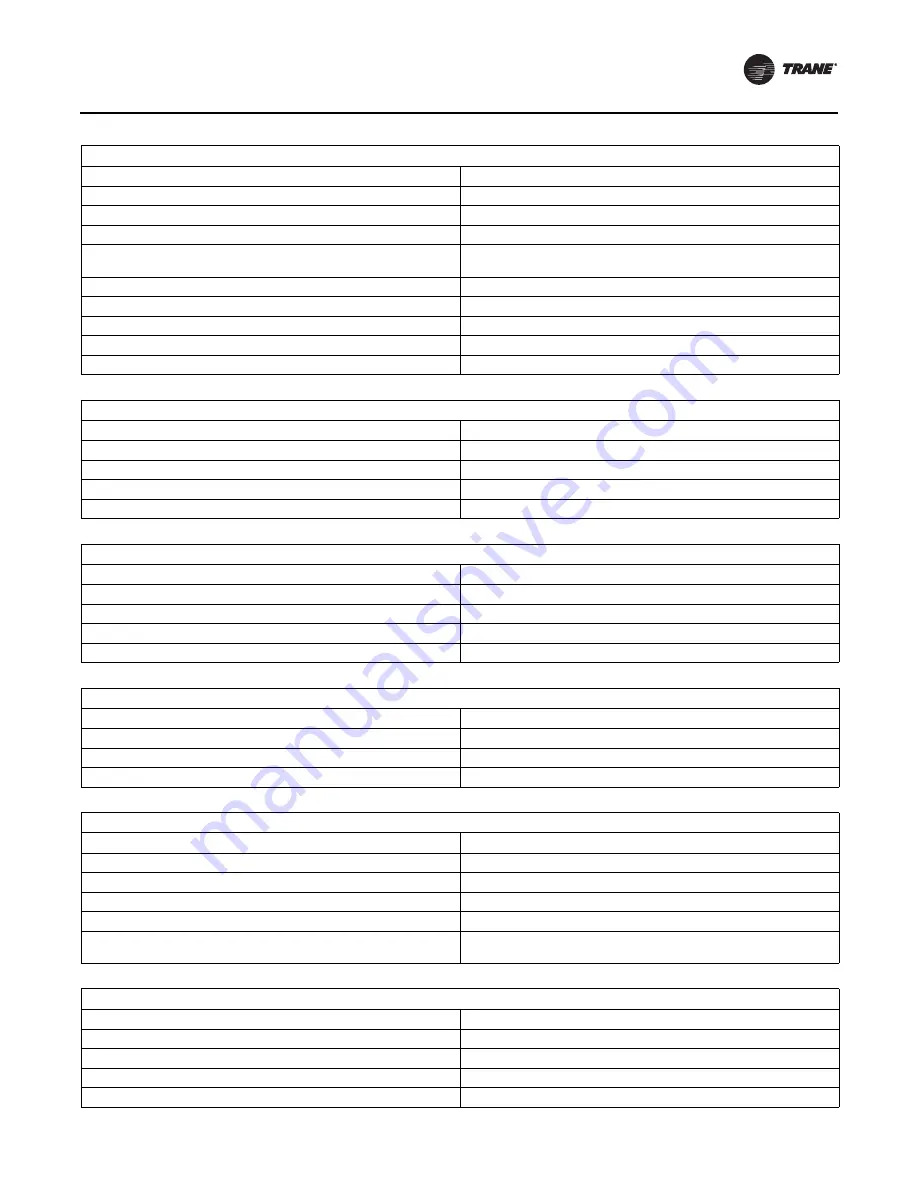
Chiller Troubleshooting
ARTC-SVX002A-EN
63
2. Symptom: Compressor will not run
Possible Causes
Potential Solutions
Compressor will not run
Assure all breakers and switches are on
Main switch open or circuit breakers open
Check circuits and motor winding for shorts or grounds
Fuse is blown
Replace fuse or reset breakers after fault is corrected
Investigate for possible overloading.
Overloads are auto-reset. Monitor to assure the overload does not re-
occur.
Thermal overload breaker tripped or fuses blown
Repair or replace
Defective contactor or coil
Determine type and cause. Correct fault before resetting safety.
System shut down by safety devices
Repair or replace coil
Liquid line solenoid will not open
Check motor for open circuit, short circuit, or motor burnout
Motor electrical trouble
Tighten all terminal screws
3. Symptom: Compressor has excessive noise or vibration
Possible Causes
Potential Solutions
Flooding of refrigerant into crankcase
Check setting of expansion valve
Improper discharge piping support
Relocate, add, or remove supports
Improper or worn compressor supports
Replace supports
Worn compressor
Replace or rebuild compressor
4. Symptom: Compressor will not load or unload
Possible Causes
Potential Solutions
Defective capacity control
Repair or replace module
Unloader mechanism defective
Replace unloader
Faulty thermostat gauge or broken capillary tube
Replace thermostat assembly
Stages not properly set for application
Reset thermostat setting for operating requirements
5. Symptom: Compressor Loading/Unloading Cycles Too Short
Possible Causes
Potential Solutions
Temperature differential set too low (4 °F (2 °C)
minimum)
Ramp/set temperature set point
Erratic water thermostat device
Replace thermostat assembly
Insufficient evaporator water flow
Adjust flow rate or remove flow
6. Symptom: Compressor loses oil
Possible Causes
Potential Solutions
Low refrigerant charge
Check for leaks and repair. Add refrigerant to proper charge.
Gas velocity in risers too low
Check riser sizes against compressor gas flow
Oil trapped in line
Check pitch of lines and refrigerant velocities
Excessive compression ring blow by
Replace or rebuild compressor
Liquid refrigerant
Check compressor superheat. Superheat at the compressor suction
should be approximately 15° F (8.3° C).
7. Symptom: Low refrigeration suction pressure
Possible Causes
Potential Solutions
Lack of refrigerant
Check for leaks. Repair and add charge.
Evaporator dirty
Clean chemically
Clogged suction line or suction gas strainers
Clean strainers
Condensing temperature too low
Check condensing temperature regulation system

